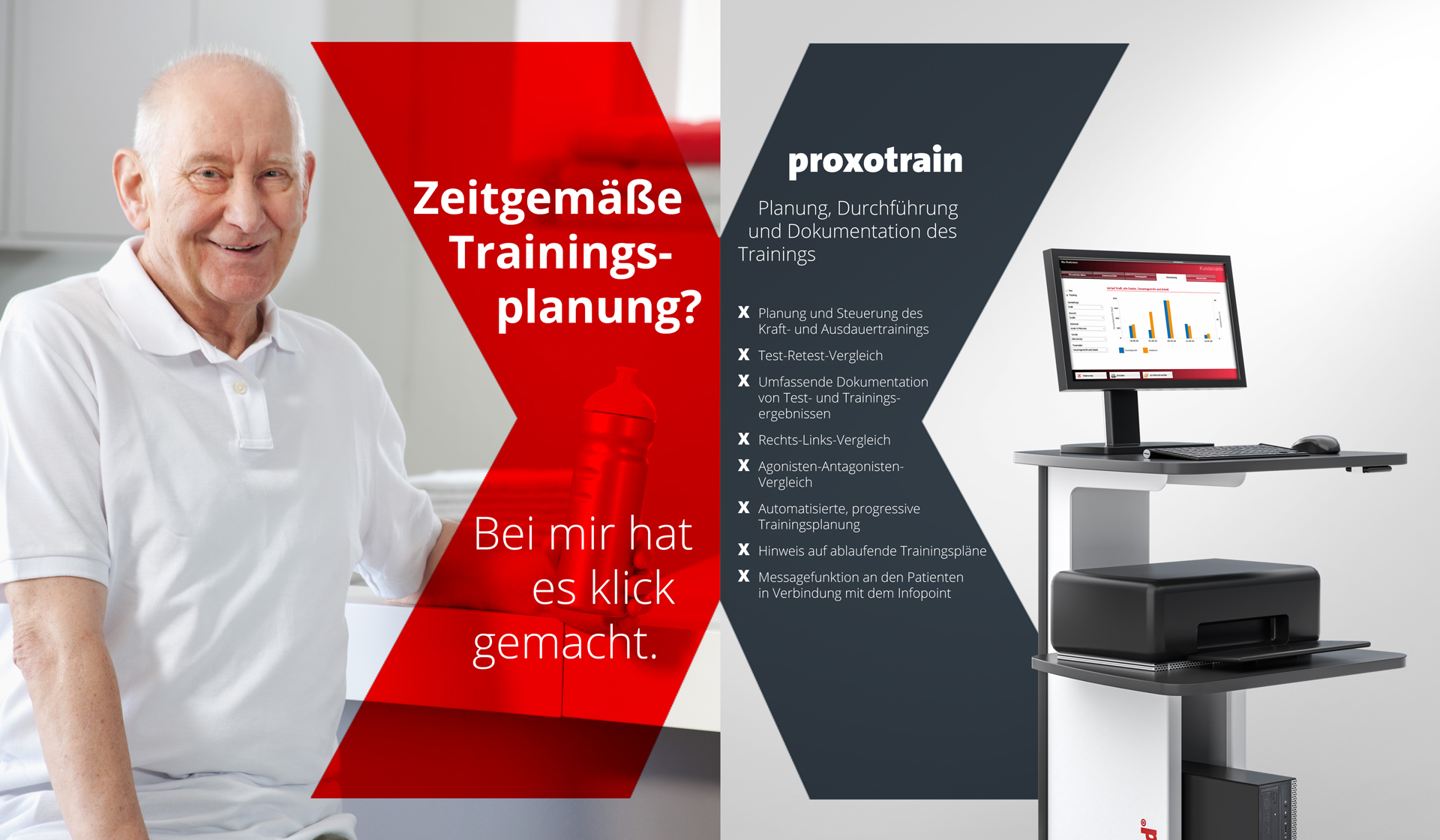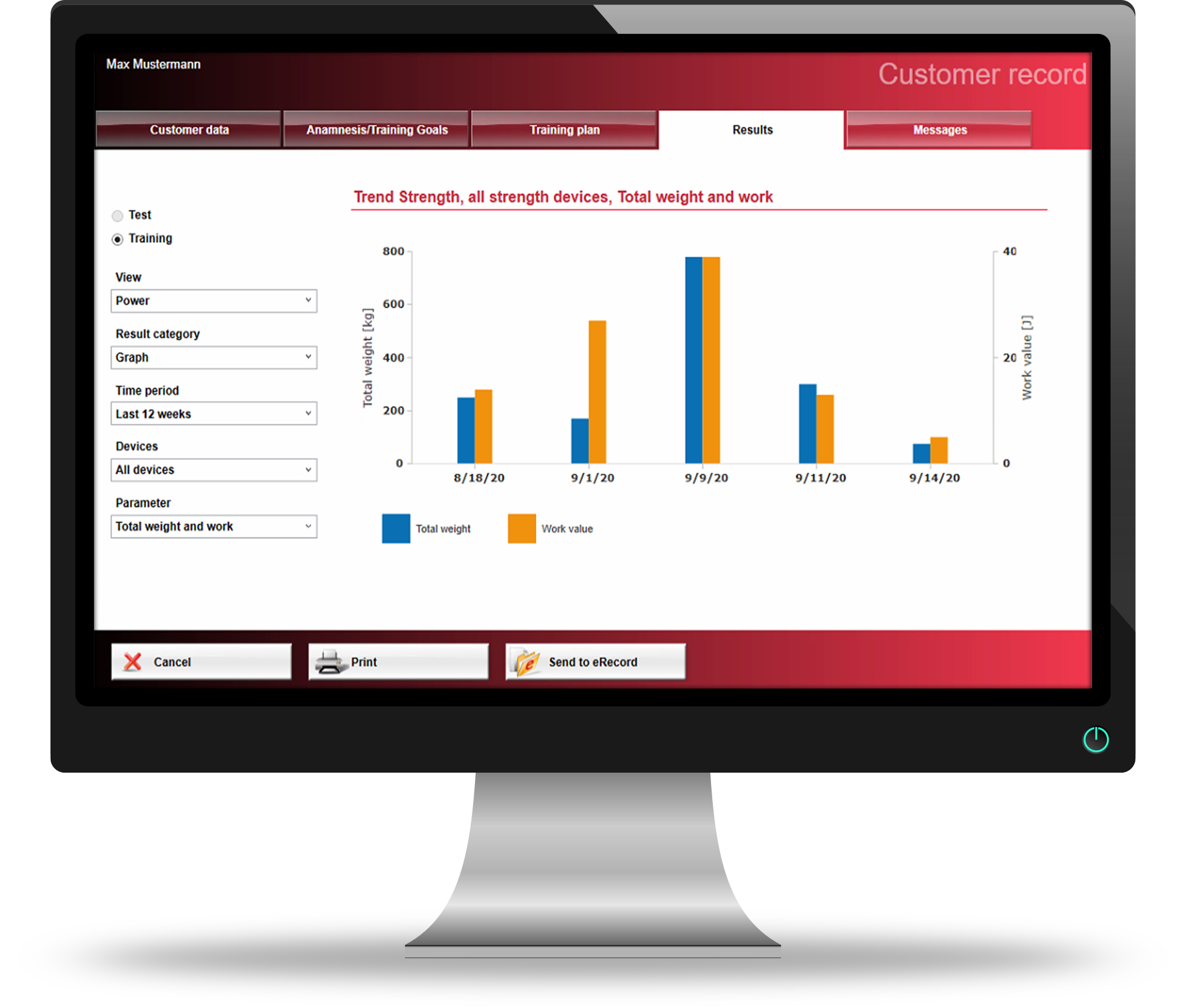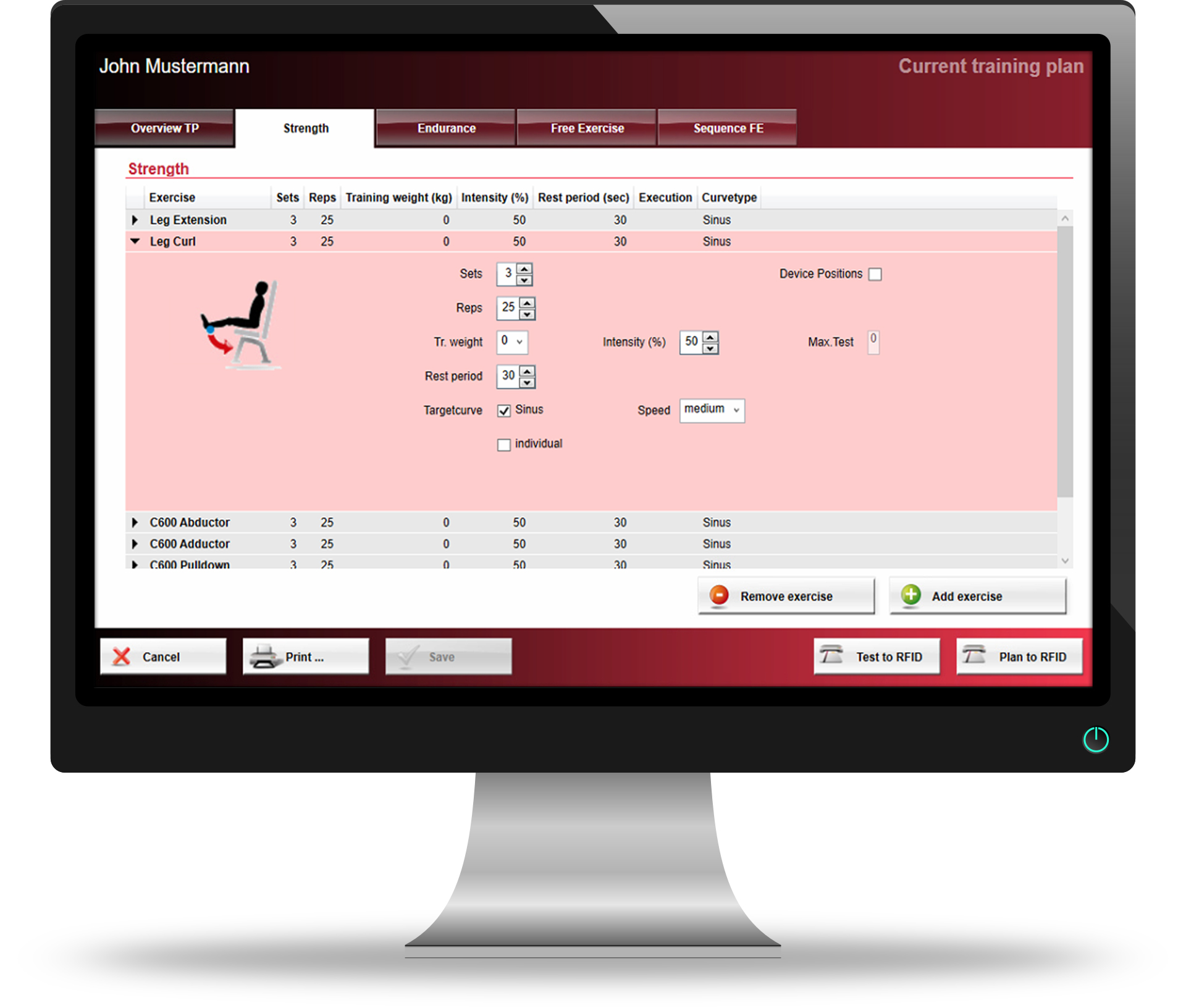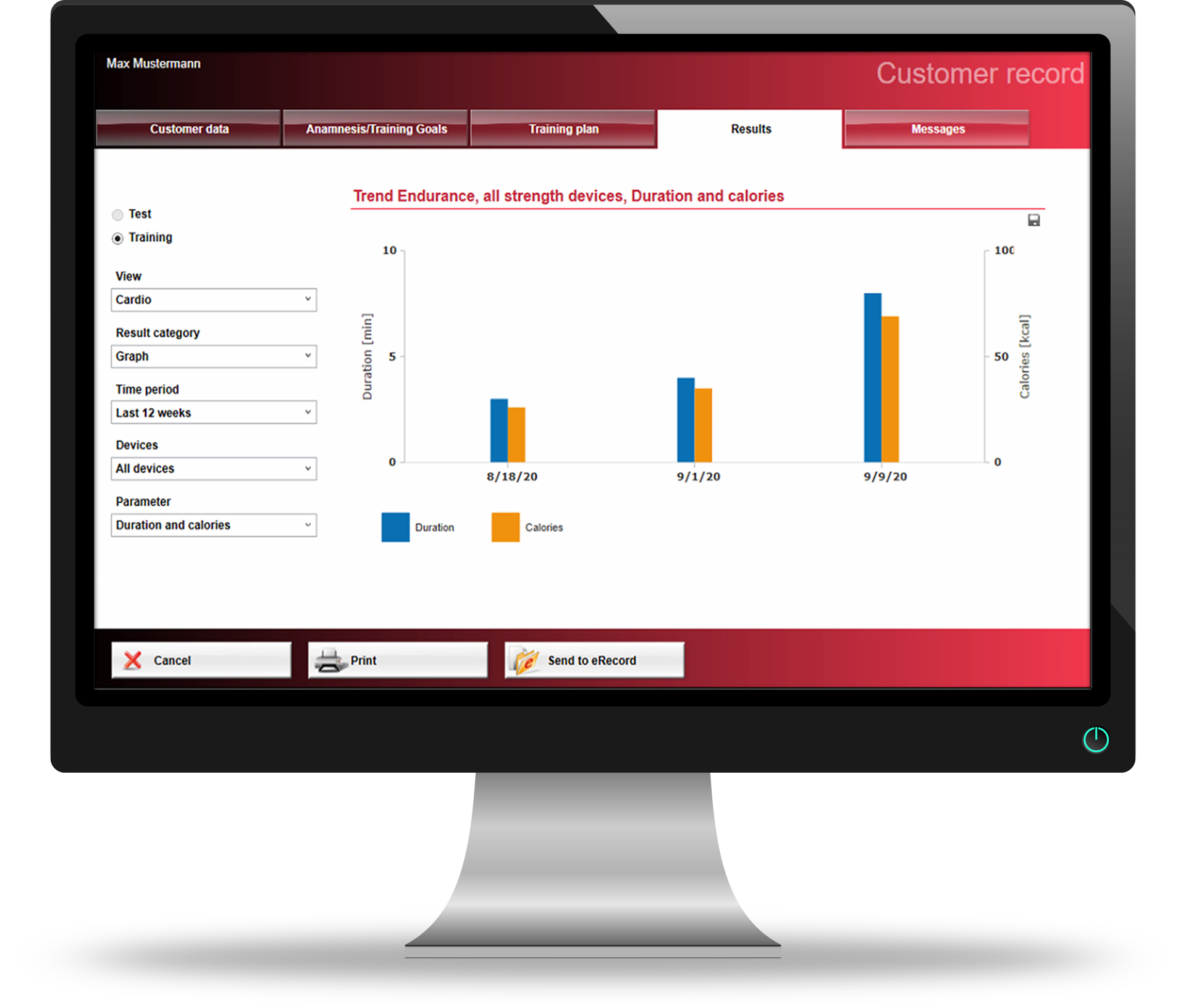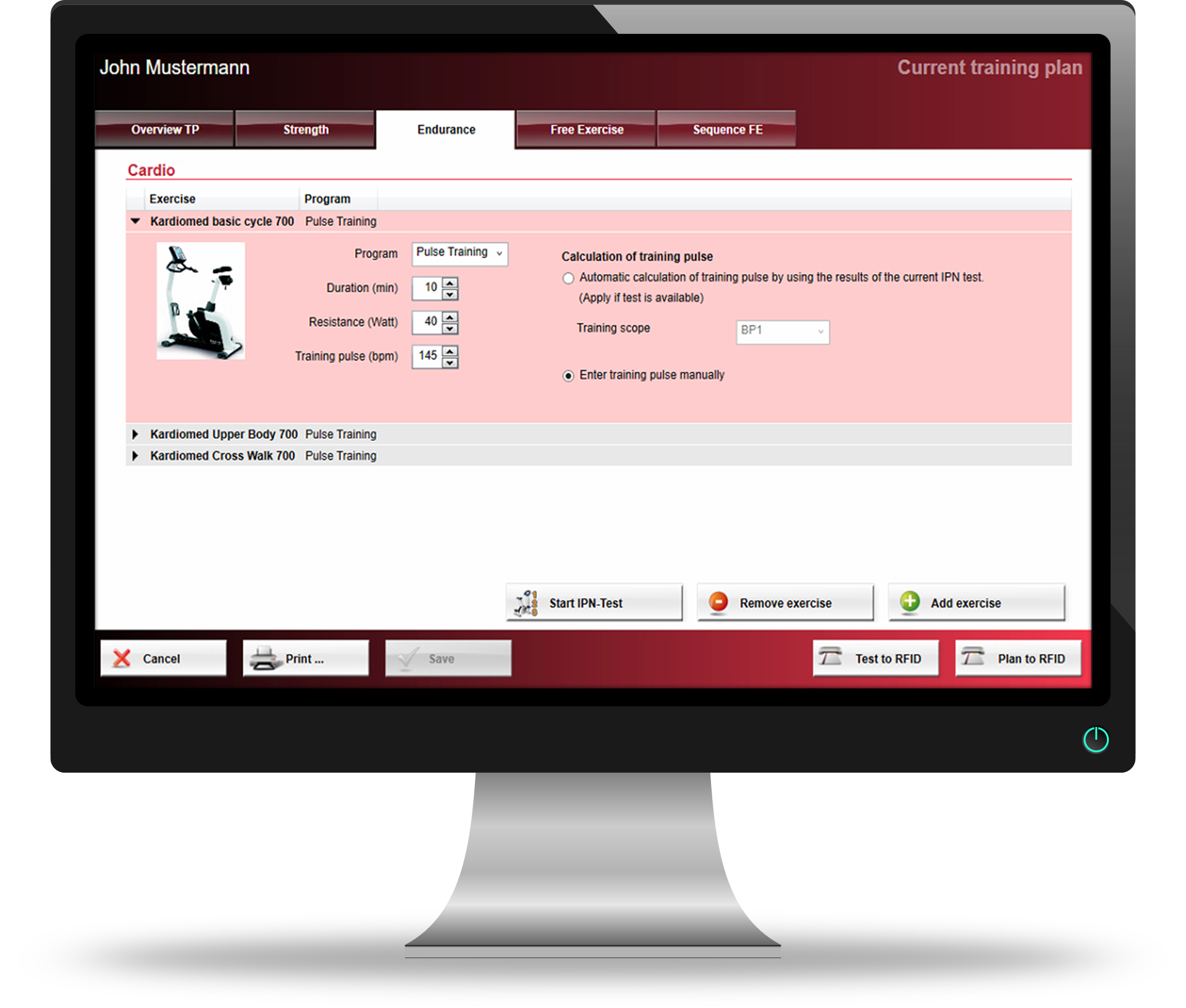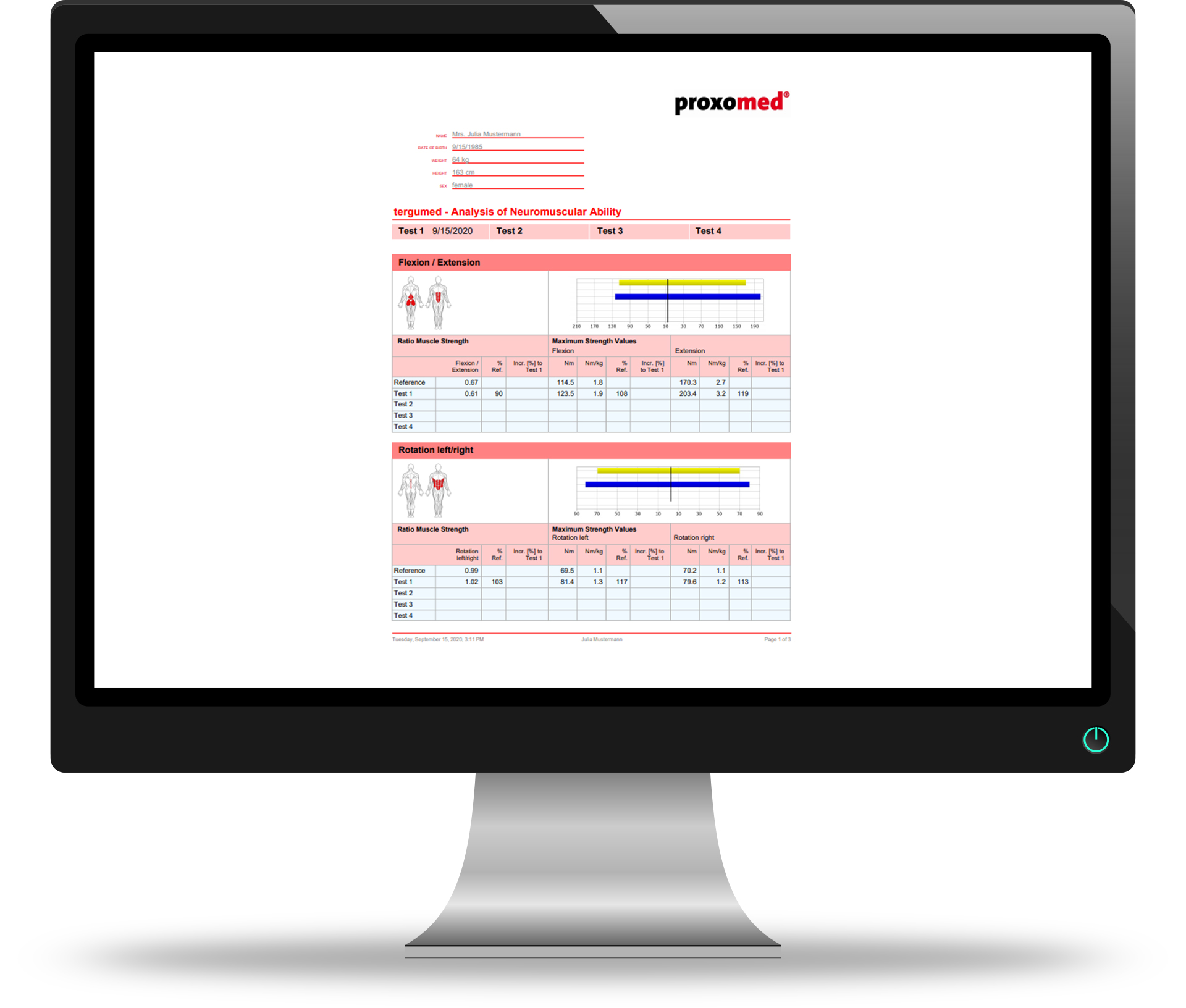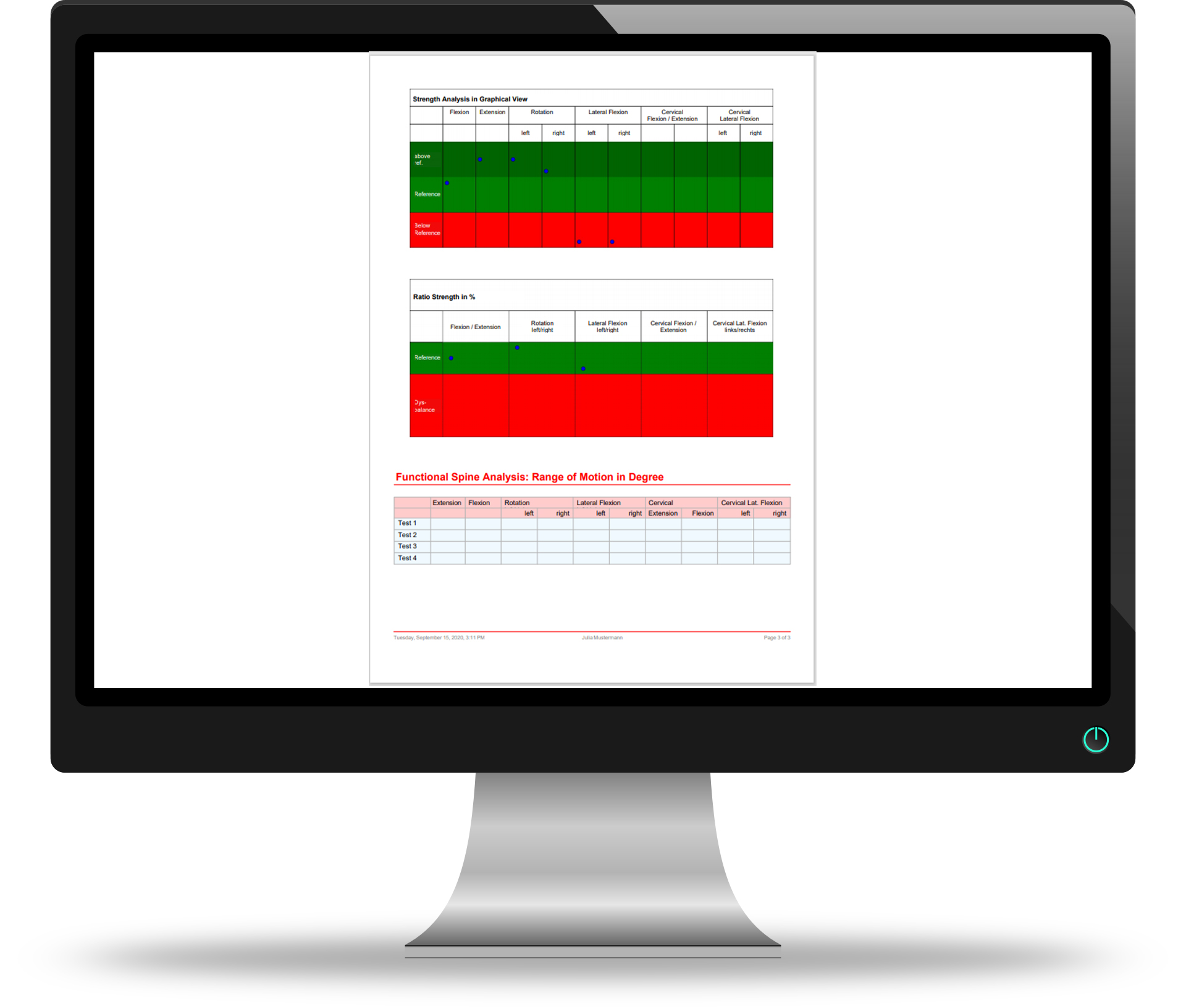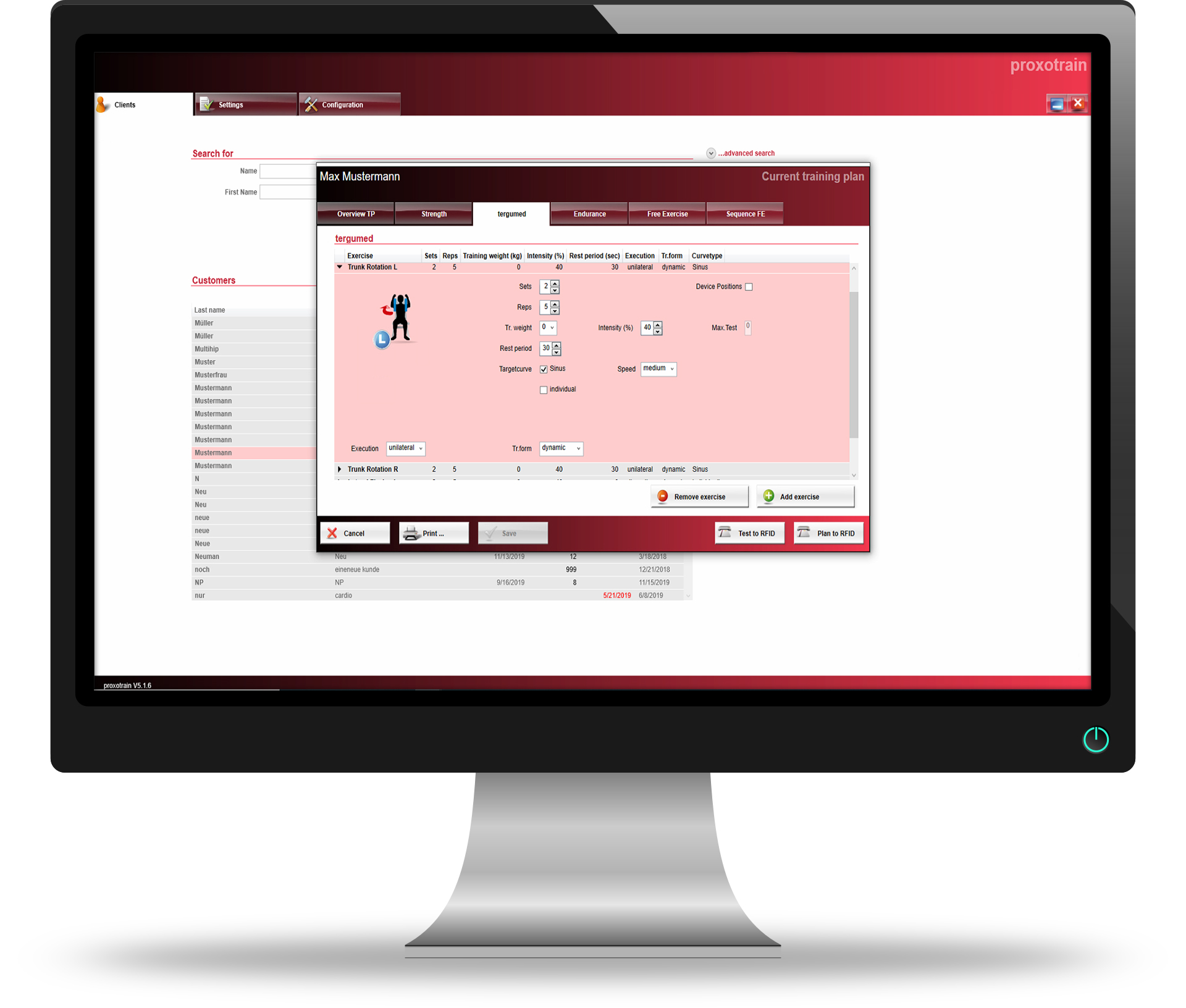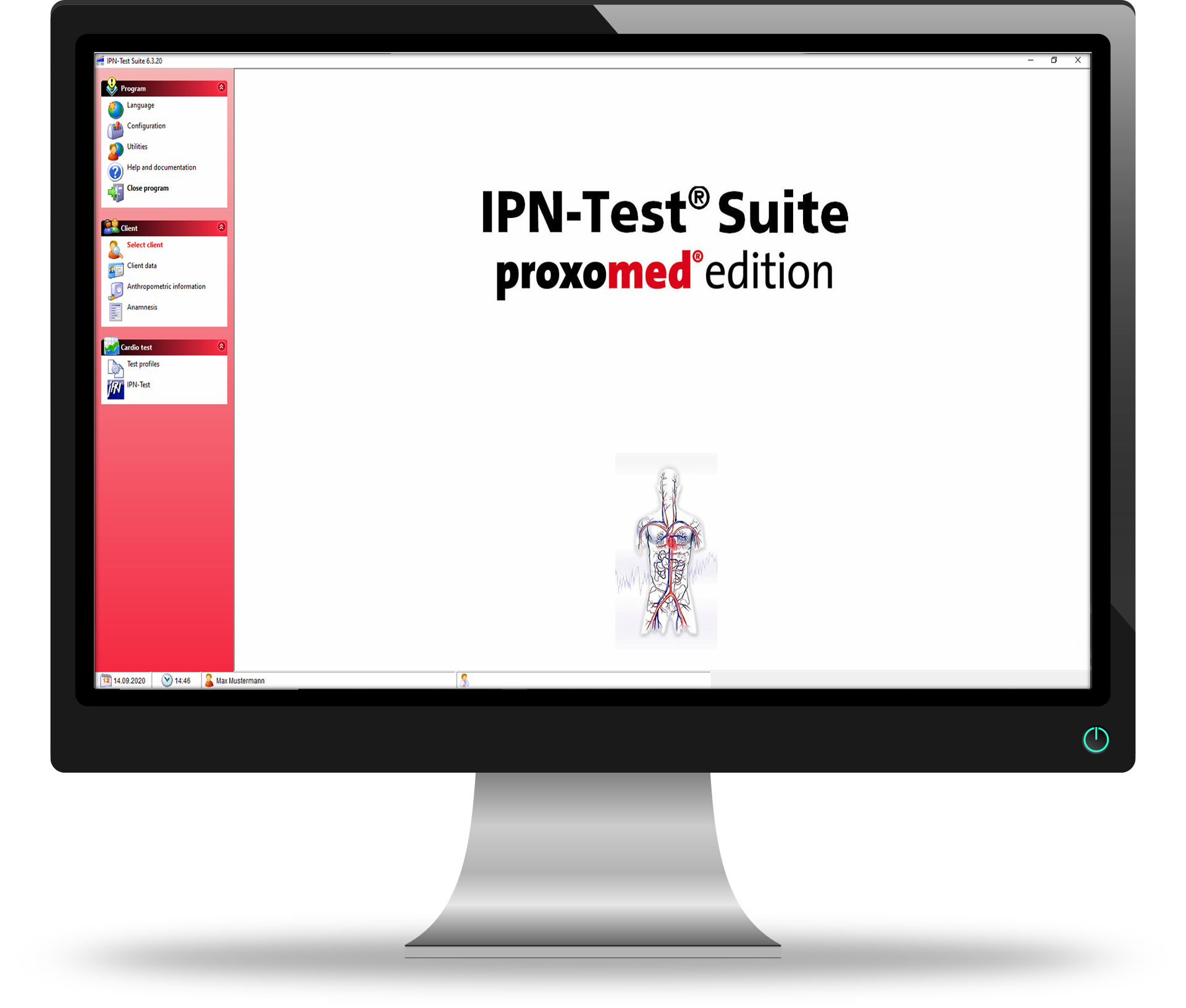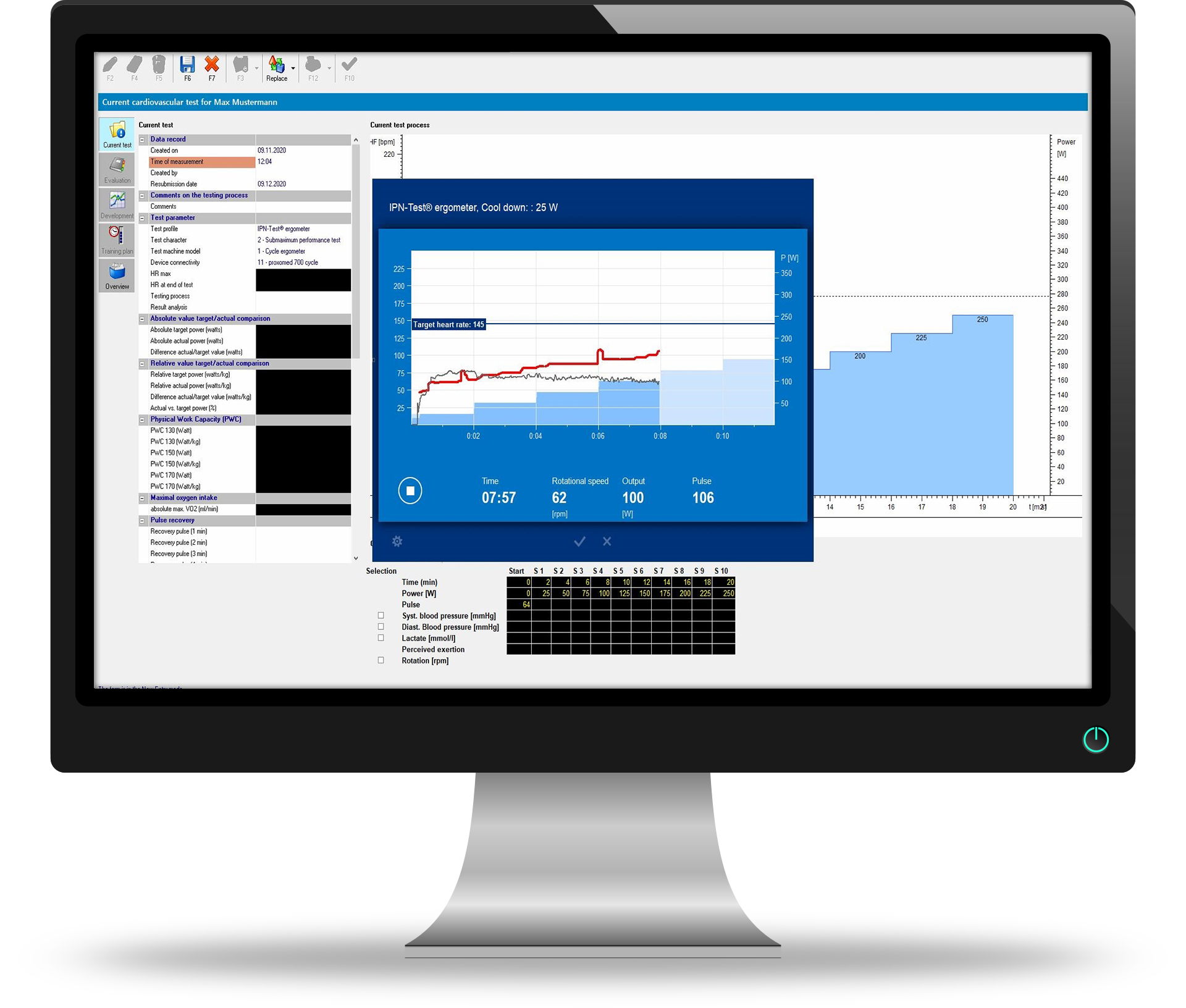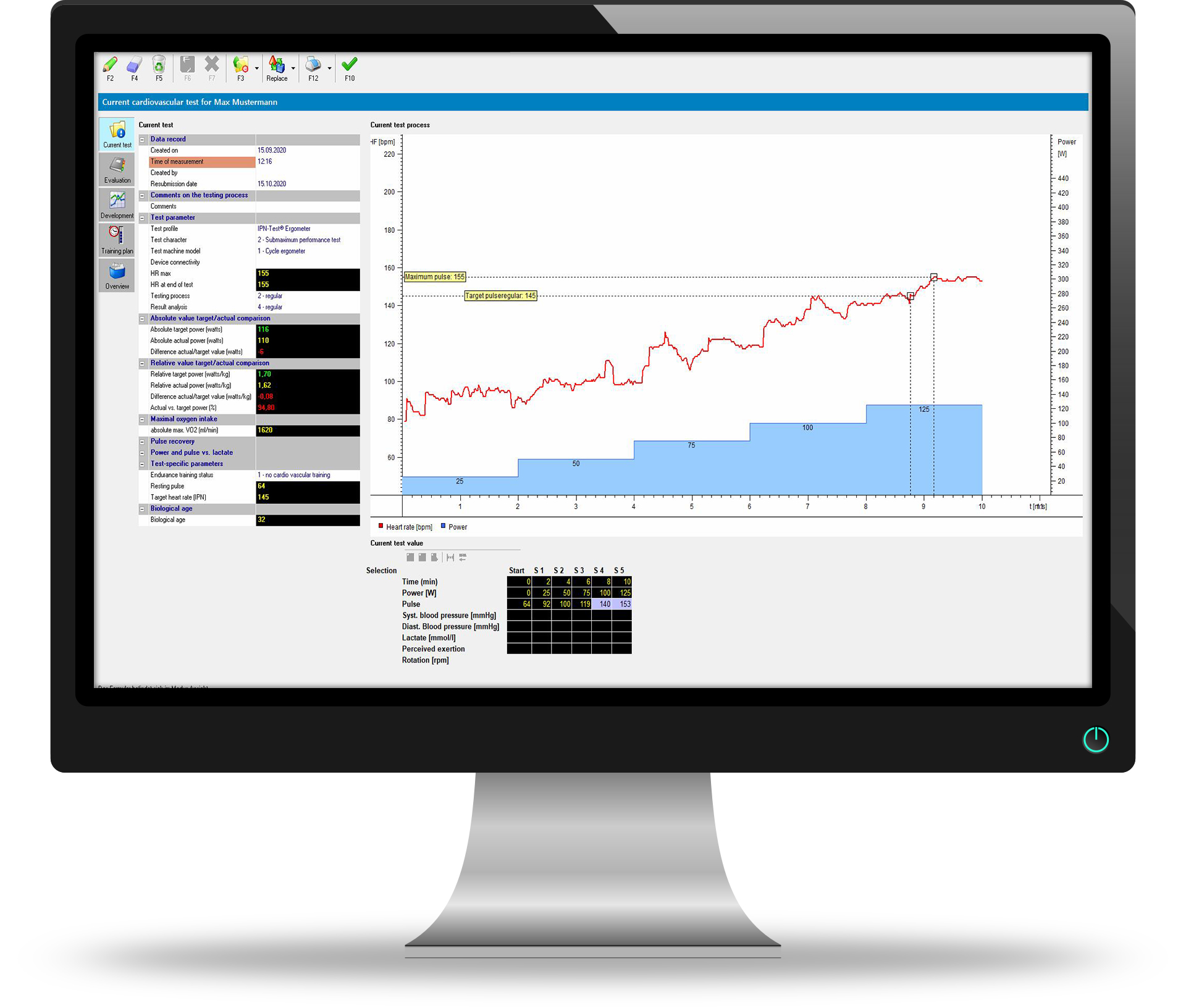From test to training
The proxotrain training planning and control software supports therapists/trainers and patients through the entire course of treatment in the acute, development and retention phases and in various specialist fields, such as orthopaedics, traumatology, neurology and secondary prevention.
The software supports doctors, physiotherapists, sports therapists and trainers in the planning and execution of strength tests and training programmes in auxotonic and isometric working conditions, as part of medical training therapy.
The proxotrain software, via the smart assist on the strength training device, records the neuromuscular strength of the corresponding muscle groups.
To be able to target the training program to the individual training status of the patient/customer, a submaximal test to determine the theoretical maximum strength can be carried out easily and uncomplicatedly, or alternatively an isometric maximal strength test (optional).
A neuromuscular strength test can be carried out isometrically at a defined joint angle or dynamically. In the dynamic version, an algorithm based on scientific findings in the literature is used to determine the repetitive maximum.
Via the RFID/chip card, the test results are transferred to the software of the therapist’s work station. From them, the proxotrain software derives an individually tailored training plan.
RFID/chip card training supports controlled and targeted strength training. The patented ultrasound measuring sensors on the training device record the training weight, movement range and speed of training used. The training takes place through smart assist. By logging in via RFID/chip card to the smart assist, the training program is called up: training reps are counted, series retrieved and pause times shown. During the visual feedback training, the person training can monitor themselves during training and achieve an optimal training quality.
The proxotrain software allows the easy implementation of endurance training: on the basis of the patient’s own individual endurance training status, for example, adjusted heart frequency training (according to an IPN test or manual entry), watt-controlled training or isokinetic training can be carried out.
Together with the patient/customer, training planning and the choice of ergometers take place via the PC. The training program is saved to the RFID/chip card and activated by entering the RFID/chip card in the ergometer.
The training results are saved on the RFID/chip card and can be entered into the PC after training via the RFID/chip card reader or transferred via a networked system to the central database.
The progress of patient/customer training is made clear in the proxotrain evaluation module in graphical and numerical forms. In this way, doctors and insurers have access to continuous documentation of the course of treatment.
The tergumed module in the proxotrain software supports the testing and training of individual muscle groups in the trunk using the tergumed devices. It also allows specific training planning on the basis of the standardised tergumed training control.
As a central building-block of the tergumed back concept, the software networks the five tergumed devices and supports the standardised testing of the individual muscle groups of the trunk. After preparation of the software, both dynamic submaximal and isometric maximal strength tests can be carried out.
After the test is carried out, the resulting data from the individual devices can be stored centrally in the software database for documentary purposes. The isometric test results will be compared in the proxotrain tergumed module with reference data from Europe’s largest reference database of back pain patients. In this way, muscular deficits and dysbalances become more rapidly apparent.
On the basis of the test results, the individual training proposal is made. The networking of the back devices means the training plan created can be called up on all devices.
The proxotrain tergumed module includes a simple administrative tool for patient data: medical and physiotherapeutic diagnosis and anamnesis relating to the patient/customer are stored and can be recalled and printed out at any time via the documentation system. In this way, the software optimises the process and result quality in patient treatment using comprehensive, continuous documentation options.
The test results are transferred from the software to the tergumanager in proxOS, making evaluation of the test results possible.
The adjustment of the training parameters can be automated in two ways: either the adjustment takes place dependent on the patient’s subjective experience or via a system standardised by the therapist which automates the training parameters using defined training units.
The basis for the training planning using the endurance training concept in the proxotrain software is the analysis of endurance. The IPN test checks the patient’s/customer’s individual condition at the submaximal level, without overstraining them. By categorising them in one of five fitness levels based on their anthropometric data, a target pulse rate at submaximal level is determined.
The idea of this test is that, using age and sex-related normal values and the individual reaction to the load (heart rate behaviour), evaluation of a person’s endurance can take place without full exertion. Through the test result, the software will determine the optimal training heart rate for all endurance ergometers, as well as for running outdoors and swimming.
The IPN test is a scientifically verified, valid test process for ergometers and treadmills. The selection of the different test processes (bicycle, running, walking) is made by preference and/or the patient’s/customer’s previous experience.
In the IPN test suite, short versions of the IPN test are also available. The short tests last 6 minutes. They are excellently suited as a screening method. The IPN test suite contains, alongside the classical IPN test, further submaximal (12) and maximal (6) test processes. Unassigned test profiles can always be configured.
Your benefits
- The databases and the program's own data transfers are encrypted.
- The databases can only be accessed via internal, password-protected systemic registration.
- Access to data in a database is only allowed to the special proxomed applications. No third-party software can access proxomed databases directly.
For your needs
- The start of a program is only possible via the operator's login.
- An operator may only start programs, perform actions in a program, and use settings and functions to which he has been authorized by his administrator.
- Logging of each change to data together with the identification of the responsible operator.
Special software features
- Time-controlled, automatic logout from the workstation.
- As a result of legal obligations to keep patient data, it can be set for deletion after the treatment is completed, in accordance with the rules.
- At the patient's request, all his personal, stored data can be handed over to him by pressing a button.




